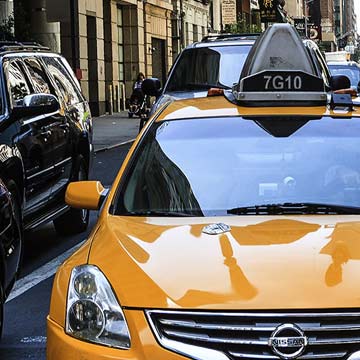GOP’s Supreme Court push may box in Cory Gardner
Featured Articles
Six years ago, Colorado Democrats failed to convince enough voters to reject Cory Gardner’s bid for the U.S. Senate. Their warnings that the Republican could, someday, be the confirming vote for a Supreme Court justice who could overturn Roe v. Wade proved ineffective. Now Gardner, 46, is poised to be one of the votes that places President Donald Trump’s nominee Amy Coney Barrett on the Supreme Court just before the election. And Democrats think they have the votes to punish him for it.
Gardner has long been considered both one of the nimblest Republican politicians and also one of the most vulnerable. His 2014 run was praised as the best Senate campaign that year for defusing Democratic attacks about his role in a “war on women” and staying on message. But he’s also a Republican in a state that has shifted sharply to Democrats since Trump was elected — the president lost the state by 5% in 2016 and then Democrats won the governorship by 11% and every other statewide race in 2018. Gardner has struggled to escape the president’s long shadow.
“Luck and timing are everything in politics, and Cory’s on the wrong end of all these elements,” said Mike Stratton, a Democratic strategist who advised the man Gardner ousted in 2014, Sen. Mark Udall. Gardner is now up against John Hickenlooper, a popular former two-term governor of Colorado and Denver mayor.
Gardner’s reelection hinges on convincing the state’s crucial slice of independent voters he’s a nonpartisan problem-solver who will look out for the state. On the campaign trail, he’s emphasized his work on state-centric, uncontroversial issues — moving the Bureau of Land Management headquarters to western Colorado, co-writing a bill to fund maintenance at national parks and creating a national suicide prevention number. “I vote 100% of the time for the people of Colorado,” Gardner said during a debate Friday evening..
But Gardner’s also been a reliable vote for his party under Trump. The president praised Gardner for being on his side “100% of the time” at a rally in February, and voters got another reminder of that when Gardner said he supports Barrett’s nomination. Republicans acknowledge that may be enough to prevent him from escaping Trump’s downward pull. “I’m saying a prayer he doesn’t get swept out by our president,” said Linda Heintz, 71, a registered Republican in suburban Denver who plans to vote early for Gardner. Heintz still hasn’t decided whether she can vote for Trump but figured Gardner was a no-brainer.
“He’s done nothing to not deserve reelection,” she said, acknowledging she doesn’t think many others in the state agree with her view. Joan Kresek doesn’t. The 65-year-old graphic design professor is an independent-turned-Democrat who exemplifies Colorado’s transformation from a swing state into an increasingly blue bastion. “Cory Gardner is attached to Trump, whom I’m 100% against,” Kresek said, saying Gardner’s support for a rapid replacement to the late Justice Ruth Bader Ginsburg “is what he stands for.”
GOP pollster David Flaherty noted that the Barrett nomination is especially difficult for Gardner. The independents he needs to win aren’t just non-partisan, they’re anti-partisanship, disliking even “the impression of partisan decision-making,” he said. Republicans’ push to confirm Barrett before the election, when they thwarted Democrats’ attempt at a less-rushed confirmation four years ago, is a tough sell.
Related listings
-
Virus spreads on panel handling Supreme Court nomination
Featured Articles 10/05/2020Two Republican members of the Senate Judiciary Committee have tested positive for the coronavirus, raising questions about the timing of Supreme Court confirmation hearings for Judge Amy Coney Barrett and whether additional senators may have been exp...
-
Norfolk courts latest in Virginia OK'd for jury trials
Featured Articles 09/16/2020One of Virginia’s largest courts will restart jury trials next week, six months after the COVID-19 pandemic forced the Tidewater-area judges to halt them. Norfolk Circuit Court is one of four courts statewide that the Virginia Supreme Court has...
-
High Court in London backs Virgin Atlantic's rescue plan
Featured Articles 09/03/2020Virgin Atlantic’s 1.2 billion-pound ($1.6 billion) restructuring plan was approved Wednesday by the High Court in London, allowing the international airline to continue rebuilding its operations after the devastation caused by the coronavirus p...

Any contracts or any transactions can go awry at any time
We know your business means a lot to you and want to understand all the aspects of your business so that we can help you in the best ways possible. We don’t discriminate depending on the size of your company. Our mission statement is to represent all business owners and entrepreneurs by navigating them through the rough waters of business litigation and guiding them to success.
We are attorneys who want to make sure we understand your business objectives and goals before we start providing you with legal counsel individualized to your business. We know what it means to be dedicated to your business. After all, we are a business as well. And just like you, we want to provide the best service we can to our clients.
Any contracts or any transactions can go awry at any time. Sometimes, making important business decisions without legal help from business attorneys could cost you your business.We don’t want you or your business to be misconstrued by anyone. Our attorneys make sure that we communicate with you often to make sure we are giving you the legal guidance you need at all times. We make sure we are responsive in a timely-manner with every single one of our clients to help them identify risks and prevent legal battles before they arise.


